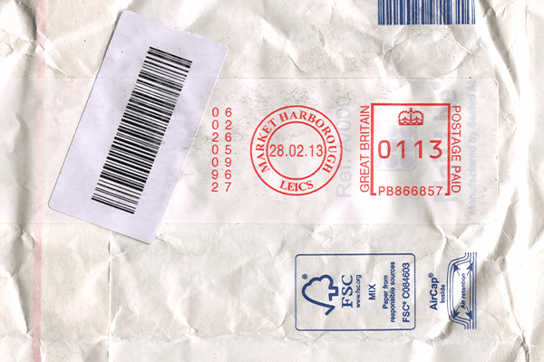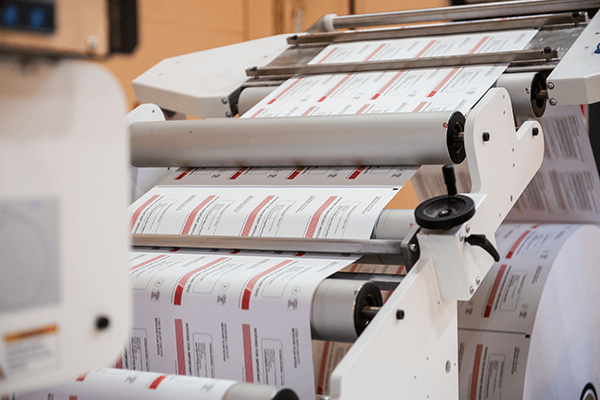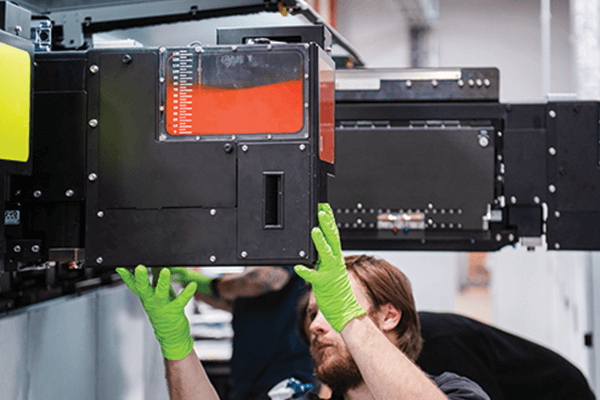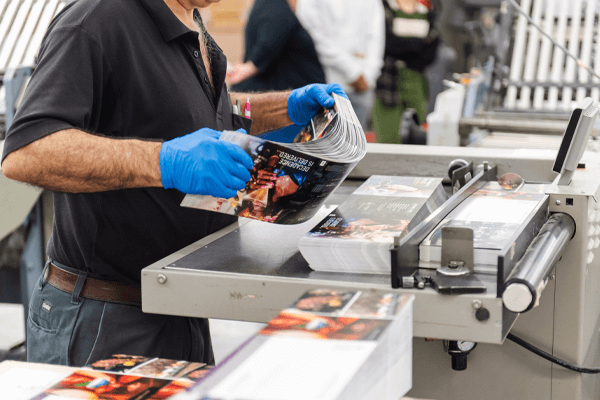
We know that direct mail campaigns can be an extremely effective way of connecting with customers. However, the need to meet specific sustainability benchmarks across nearly every industry can muddy the waters in terms of incorporating direct mail campaigns into a larger print marketing strategy.
The good news is that there are a number of avenues to marry the power of direct mail with a more sustainable approach to print that can produce meaningful response rates and ROI. Here, we’ll look at five ways to make your next direct mail campaign more sustainable.
Make sure your CRM data is clean
A more sustainable approach to direct mail actually begins with a more accurate view of the audience you’re targeting. Maintaining your CRM to ensure your prospect and customer data can be cleanly segmented into strategically targeted mailing lists can help ensure you’re not wasting resources by sending mailers to contacts who are not viable leads anymore or to those with inaccurate addresses.
A recent survey found that 79% of respondents said the accuracy of their CRM data has deteriorated in the last few years, but the following steps can help ensure your direct mail campaign is actually hitting the right mailboxes in order to generate a response:
- Review your contact records and remove duplicates. Reviewing your contact records and removing duplicates helps you better understand the necessary print quantity of your direct mailer in order to avoid printing pieces that can’t be mailed.
- Purge unengaged leads. If a lead hasn’t engaged with your content over several campaigns, then odds are — unless your direct mailer has a highly-targeted, powerful offer — they’re not the ideal candidate for your direct mail campaign. Purging unengaged leads will help you control print resources but also help optimize your marketing strategy going forward.
With clean CRM data, you can make sure you are printing the precise number of mailers you need without wasting time, money, and, most importantly, resources like paper and ink.
Print only what you need with POD
Speaking of printing the exact quantity for your targeted list, digital print and print-on-demand (POD) technology help you sidestep one of the downsides of using more conventional presses to print direct mail: waste.
With more traditional offset presses, you need to hit the right economies of scale in order to make direct mail campaigns a worthwhile investment. However, the issue with printing such large quantities using more conventional technology like offset printing is that marketers often end up with a large surplus of mailers.
This not only wastes paper stock and ink, but there’s also an increase in your carbon footprint from having to ship and store more print pieces than you actually need.
Digital on-demand print makes it possible to print full-color direct mail using a wide variety of substrates, inks, or finishes in the exact quantities you need without the risk of wasted copies. This also helps you reduce your print costs and eliminate the resources associated with warehousing extra copies. Plus, the ability to print the exact quantity you need also helps you more strategically use your print marketing dollars.
Rethink your ink technology
There was a time in the not too distant past when thinking more sustainably about ink meant opting for products that were manufactured using organic or natural compounds. However, in a relatively short span of time, thinking more sustainably about ink today means using the evolution of digital print technology to produce high-quality print using less water and colorants.
For example, digital inkjet presses apply ink via small printheads as opposed to using large, pre-produced plates that are common with more conventional presses. This application method is faster, more efficient, and creates the same color quality and stability while reducing your ink and water usage.
The formulation of new ink types is also helping marketers and printers alike print in a more sustainable manner. NanoInk® technology uses pigment particles that have significantly smaller diameters than other inks, which makes it possible to produce stunning images with less pigment.
NanoInk technology also allows for colorants to be shipped as concentrates and mixed with water onsite. This means NanoInk can be shipped without water, which reduces space and weight during shipping to help you cut your carbon footprint.
Prioritize your choice of paper
Consider printing on recycled substrates or papers that use some percentage of post-consumer fibers. Not only does this help preserve forests, but it also makes you less reliant on the production of virgin wood fibers.
The challenge with using recycled substrates though is that some offset and even digital presses cannot print full-color on recycled sheets without running the risk of bleed. Plus, the thickness of some recycled sheets can make it difficult to print pages of high enough quality to justify the investment in recycled sheets.
But as with the development of NanoInk technology, Nanographic Printing® gives you the ability on any off-the-shelf-recycled substrate or paperboard, regardless of the amount of post-consumer fibers or whether the sheet is coated, uncoated, treated, or untreated. The capability to print on any off-the-shelf recycled substrate not only makes your print more sustainable, but it also helps you avoid product availability issues or breakdowns in the paper supply chain.
Prioritizing your choice of paper to make your direct mail more sustainable also means thinking more foundationally about where your paper comes from. Choosing paper manufactured under sustainable harvesting guidelines from working forests — a forest that is harvested and then replanted — creates a more environmentally friendly value chain.
Plus, specifying paper that is certified by organizations like the Forest Stewardship Council® (FSC)® or the Sustainable Forestry Initiative (SFI) helps ensure the paper used in your direct mail campaign was produced in a responsible way by providing a transparent chain of custody that documents where your paper came from.
Think in a more targeted way about your mailer's messaging
Odd as it may seem on the surface, thinking in a more strategic, targeted way about the messaging of your direct mail campaign can actually play a role in helping you conserve things like paper and ink.
Personalized messaging can increase revenue by up to 15% and increase your marketing budget efficiency by up to 30%, which means building your direct mailer around variable data printing (VDP) and the data-driven approach of digital press technology makes it possible to print pieces with an increased likelihood of success compared to campaigns with more generic messaging.
For example, creating personalized content using customer data and insights such as geographic location, lifecycle stage, purchase history, online browsing, or ecommerce cart abandonment creates a more authentic, personal connection with your customer that makes them more likely to act on your call-to-action.
This drastically reduces the number of pages and amount of ink you need because your highly targeted direct mail campaign is built to succeed on the first attempt. Plus, personalization can make it easier to create a meaningful user experience with less copy and/or images, which in turn helps reduce the amount of ink you need to make an effective mailer.
Are you ready to up your sustainability game with your next direct mail campaign? Our direct mail services and on-demand postcard storefront can streamline the process of creating direct mail postcards in a variety of sizes that can help you reach customers in a more eco-friendly way.




